
Mexico City
Viva Mexico!! Is it bad that I can’t kick the urge to yell out that famous phrase over and over again now that we’ve touched down in Mexico City?!? I guess I’d fit right in considering it’s the eve of their Independence Day… but then again, Brittany and I were the only gringas on our flight, so fit in?? Probably not.
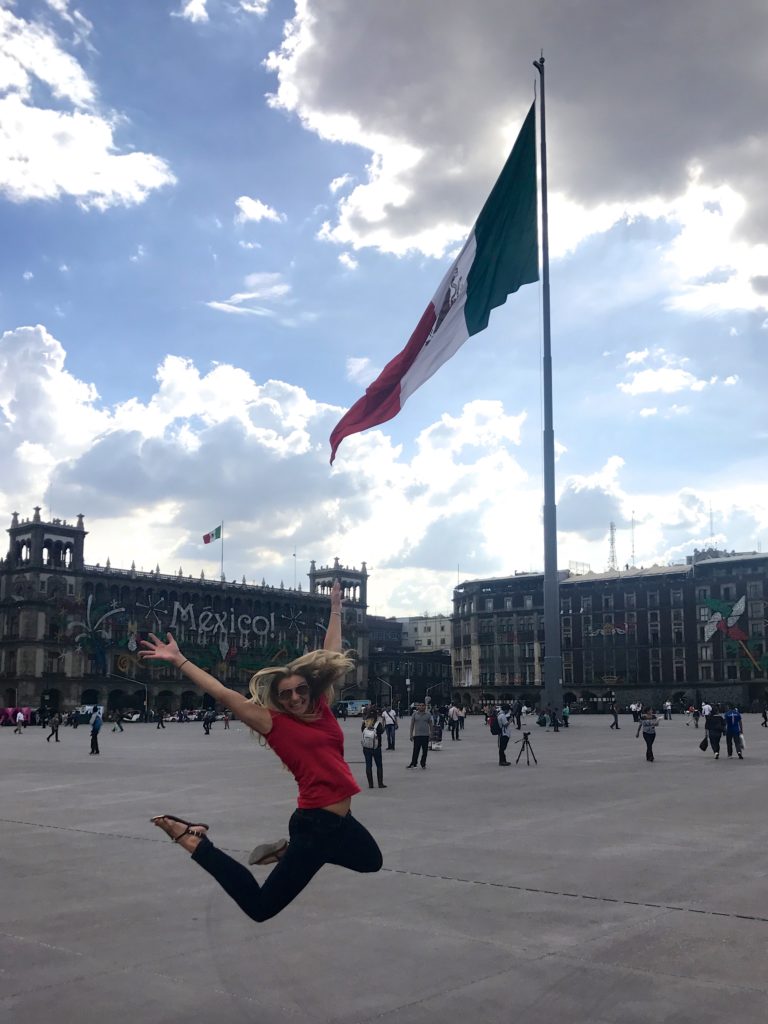
I just can’t get over the size of Mexico’s capital. As we circled to land, this megalopolis covering 1,480 square miles with a population of 22 million, seemed to stretch on forever in every direction below us. It’s the 10th largest agglomeration in the world and the largest in the Western Hemisphere… and it seems that Mexico City, also known as CDMX, is now having it’s moment. It’s a city of contrasts, with history and tradition standing their ground, but contemporary nuances and cutting-edge trends complimenting it’s character. Built by the Spanish in the 16th century over the ruins of the former Aztec capital, Tenochtitlan, Mexico City, is the oldest capital city in the Americas and combines centuries of pre-Columbian civilization with a modern cosmopolitan culture. Don’t let the stereotypes you’ve heard about Mexico City… drug cartels, corruption and violence… define the present of this intriguing destination. Yes, CDMX is overcrowded, chaotic and sometimes gritty… but it’s also trendy, edgy and exotic. Fancy restaurants, taco stands, boutique hotels, luxury cars, designer stores, charming neighborhoods and leafy parks are all part of the appeal, yet CDMX remains low-key and the people couldn’t be friendlier and more welcoming. This city will challenge and inspire you and is worth every effort it takes to explore.
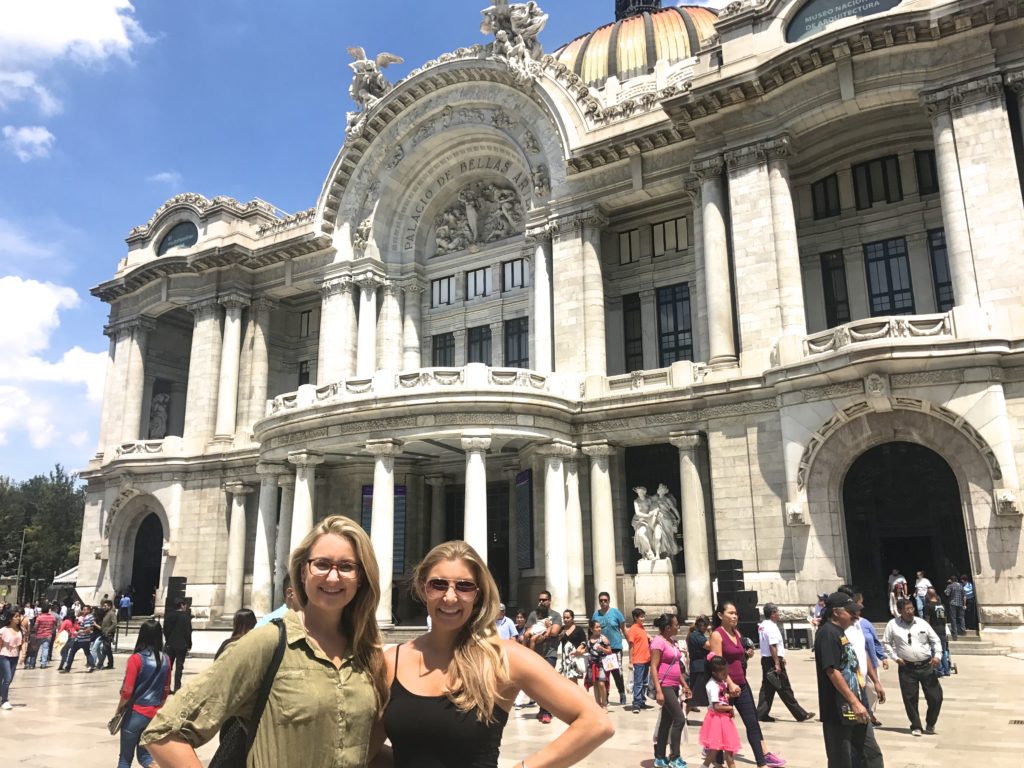
The Centro Histórico neighborhood is Mexico City’s heart and soul. Stand in the Zócalo, also known as the Plaza de la Constitución, and take a moment to absorb the history and power of this vast square that was founded by Mexica City 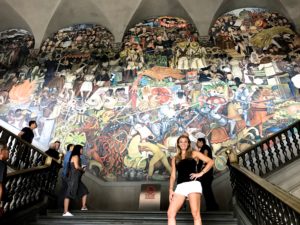 (Tenochtitlan) in 1325. Marvel at the giant Mexican flag standing above everything else in the center of the plaza, with the Catedral Metropolitana on the northern edge and the Palacio Nacional to the east. The Palacio offers free entrance and is worth a visit just to see Diego Rivera’s impressive murals depicting Mexico’s history, especially his masterpiece in the plaza’s stairwell titled, “The Great City of Tenochtitlan.” Don’t miss Templo Mayor, twin temple-pyramids discovered in the 1970’s unveiling the center of both religious and political life for the Mexica
(Tenochtitlan) in 1325. Marvel at the giant Mexican flag standing above everything else in the center of the plaza, with the Catedral Metropolitana on the northern edge and the Palacio Nacional to the east. The Palacio offers free entrance and is worth a visit just to see Diego Rivera’s impressive murals depicting Mexico’s history, especially his masterpiece in the plaza’s stairwell titled, “The Great City of Tenochtitlan.” Don’t miss Templo Mayor, twin temple-pyramids discovered in the 1970’s unveiling the center of both religious and political life for the Mexica 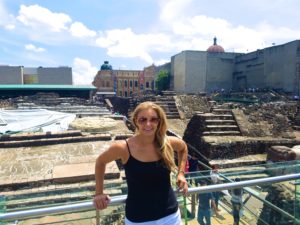 people… the ruins are open to the public but artifacts found during the excavation can be viewed in the museum. The Palacio de Bellas Artes, a few blocks to the west, is a stunning, white-marble palace that serves as the cultural center of Mexico City. When walking the streets of Centro Histórico, take in the prominent architecture and marvel at these iconic landmarks that stand on what once was the capital of the Aztec Empire.
people… the ruins are open to the public but artifacts found during the excavation can be viewed in the museum. The Palacio de Bellas Artes, a few blocks to the west, is a stunning, white-marble palace that serves as the cultural center of Mexico City. When walking the streets of Centro Histórico, take in the prominent architecture and marvel at these iconic landmarks that stand on what once was the capital of the Aztec Empire.
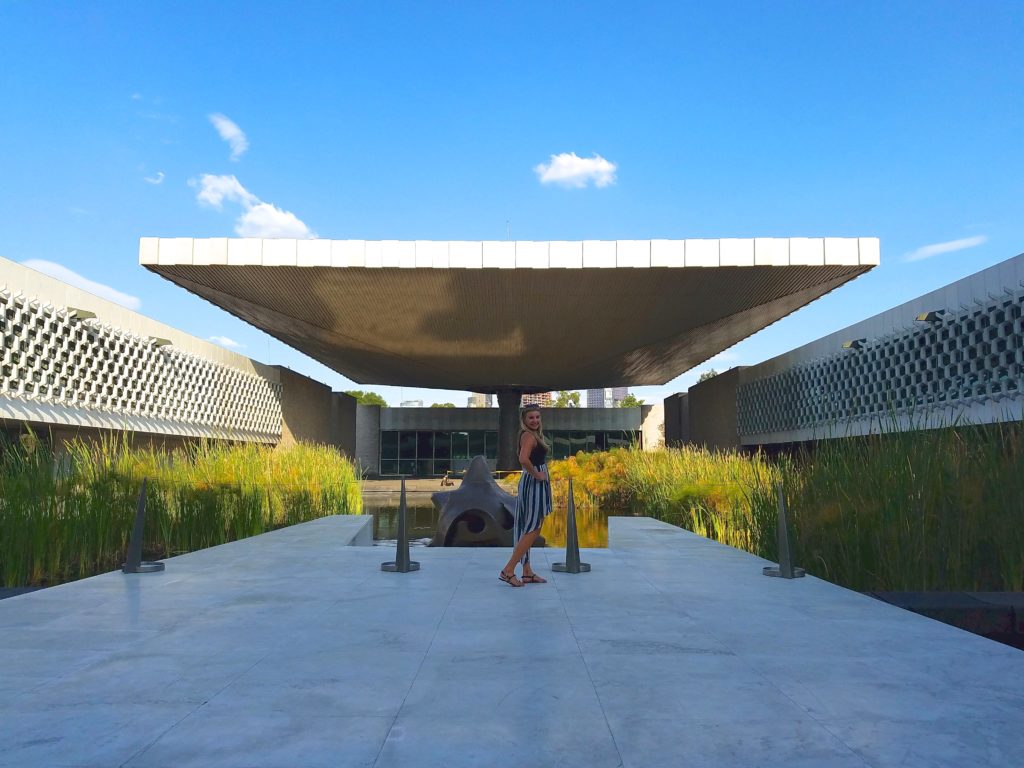
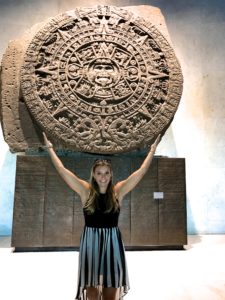 But today, Mexico City is a museum empire… it’s home to over 150 museums, the most of any city in the world. As we know, I’m not a fan of spending my time inside a museum’s walls, but I do appreciate an opportunity to visit highly recommended sites and in CDMX, the Museo Nacional de Antropología is one of them. Just off the park in Chapultepec, the infamous Anthropology Museum takes you on a tour of Mexico’s pre-Columbian and modern day cultures through art and artifacts. If you’re not a museum
But today, Mexico City is a museum empire… it’s home to over 150 museums, the most of any city in the world. As we know, I’m not a fan of spending my time inside a museum’s walls, but I do appreciate an opportunity to visit highly recommended sites and in CDMX, the Museo Nacional de Antropología is one of them. Just off the park in Chapultepec, the infamous Anthropology Museum takes you on a tour of Mexico’s pre-Columbian and modern day cultures through art and artifacts. If you’re not a museum 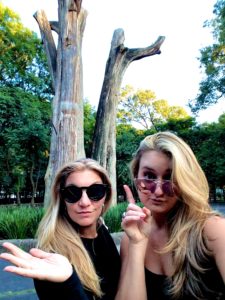 lover either, you’ll at least appreciate the unique architecture and the impressive courtyard and then take a stroll through the gardens, lakes and fountains of Bosque de Chapultepec, a leafy retreat from the city’s chaos. But you won’t escape history here… Ahuehuete El Saregento is one of the oldest cypress trees in the park and while no longer living, is believed to have stood here for more than 550 years!
lover either, you’ll at least appreciate the unique architecture and the impressive courtyard and then take a stroll through the gardens, lakes and fountains of Bosque de Chapultepec, a leafy retreat from the city’s chaos. But you won’t escape history here… Ahuehuete El Saregento is one of the oldest cypress trees in the park and while no longer living, is believed to have stood here for more than 550 years!
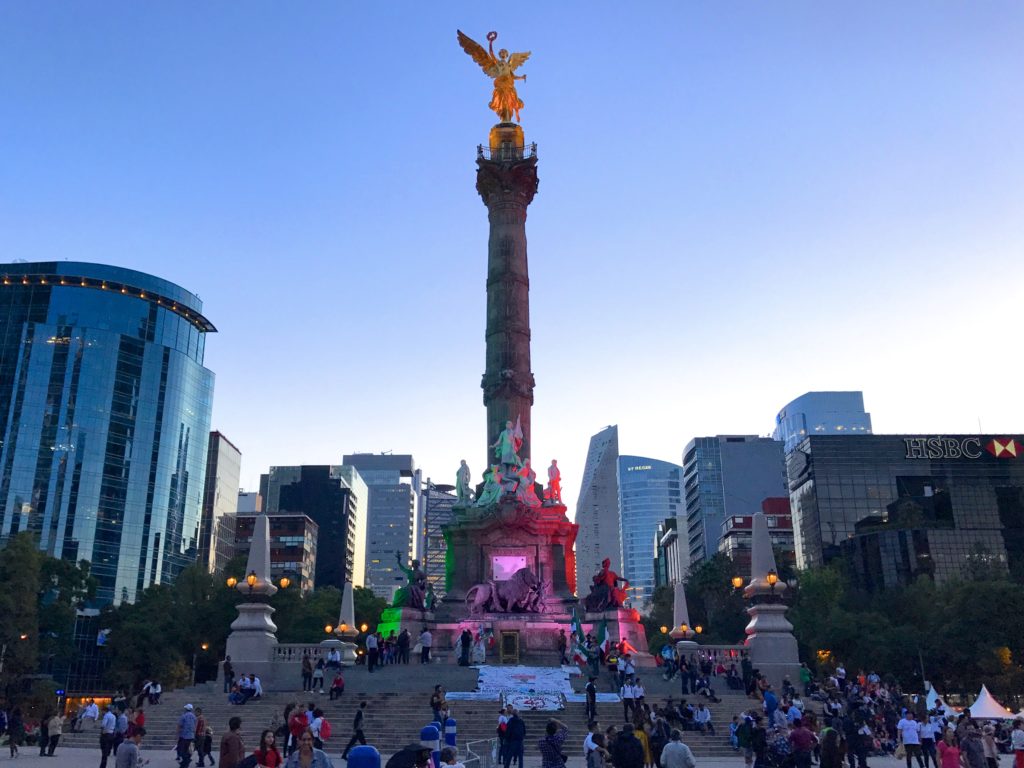
Stretching diagonally from Chapultepec Park to the Centro Histórico, is Paseo de la Reforma, one of Mexico City’s main arteries. Modeled after Paris’ Champs-Élysées, this beautiful boulevard is lined with monuments, luxury hotels and modern high-rise office buildings. After it’s completion at the end of the 19th century, chic neighborhoods popped up in the surrounding areas and today this central stretch is still one of the city’s most exclusive addresses. We stayed on this main drag, which proved to be a good choice and a central location from which to explore the city.
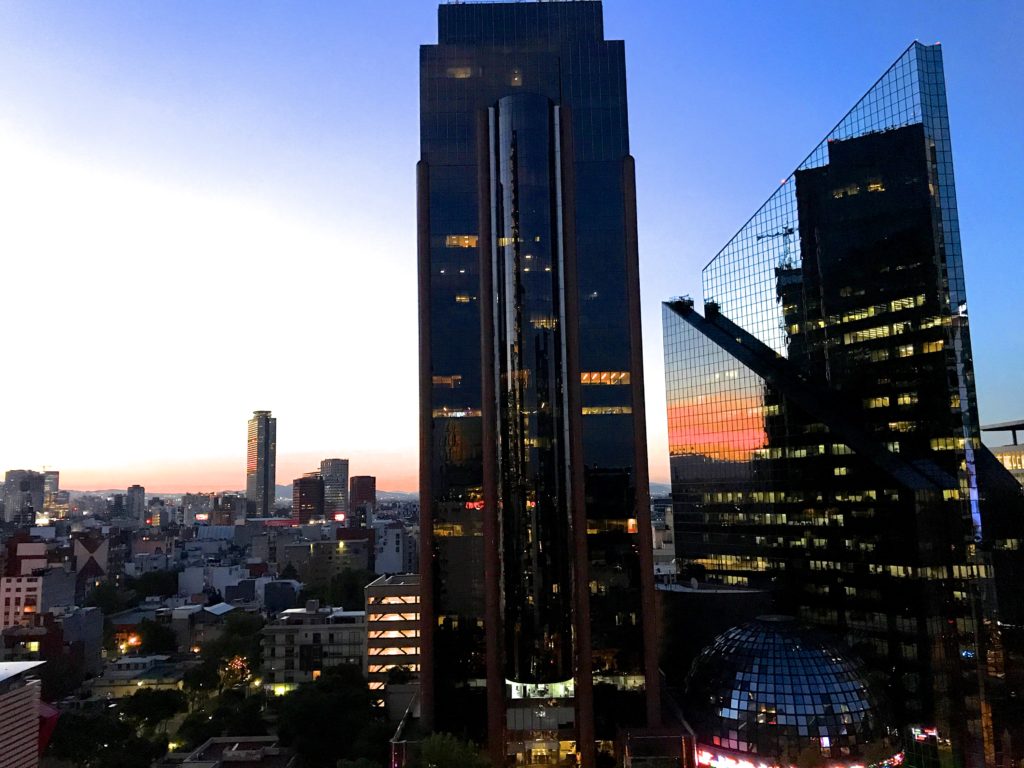
And explore we did… Brittany and I made the trip to the southern neighborhood of Xochimilco, famous for its floating gardens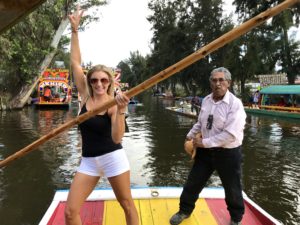 and canals. The Aztecs originally built the city of Tenochtitlan in the center of Lake Texcoco and as the city continued to expand after the Spanish conquest, parts of the lake were drained to accommodate for the growth. Now, just a small segment of what once was a massive canal system is left and you can hop on a trajinera for a fiesta-filled ride through these waterways. Locals gather families and friends and hire an oarsmen to paddle these brightly colored flat bottom rafts through the crowded canals while they eat, drink and enjoy the ambience. Vendors paddle canoes alongside your trajinera selling beer, corn, tacos, jewelry, blankets… the list goes on, while musicians approach asking for pesos to play you a live tune. While this makes for an enjoyable afternoon, it also gives you a glimpse into how people and goods were transported through the city six centuries ago.
and canals. The Aztecs originally built the city of Tenochtitlan in the center of Lake Texcoco and as the city continued to expand after the Spanish conquest, parts of the lake were drained to accommodate for the growth. Now, just a small segment of what once was a massive canal system is left and you can hop on a trajinera for a fiesta-filled ride through these waterways. Locals gather families and friends and hire an oarsmen to paddle these brightly colored flat bottom rafts through the crowded canals while they eat, drink and enjoy the ambience. Vendors paddle canoes alongside your trajinera selling beer, corn, tacos, jewelry, blankets… the list goes on, while musicians approach asking for pesos to play you a live tune. While this makes for an enjoyable afternoon, it also gives you a glimpse into how people and goods were transported through the city six centuries ago.
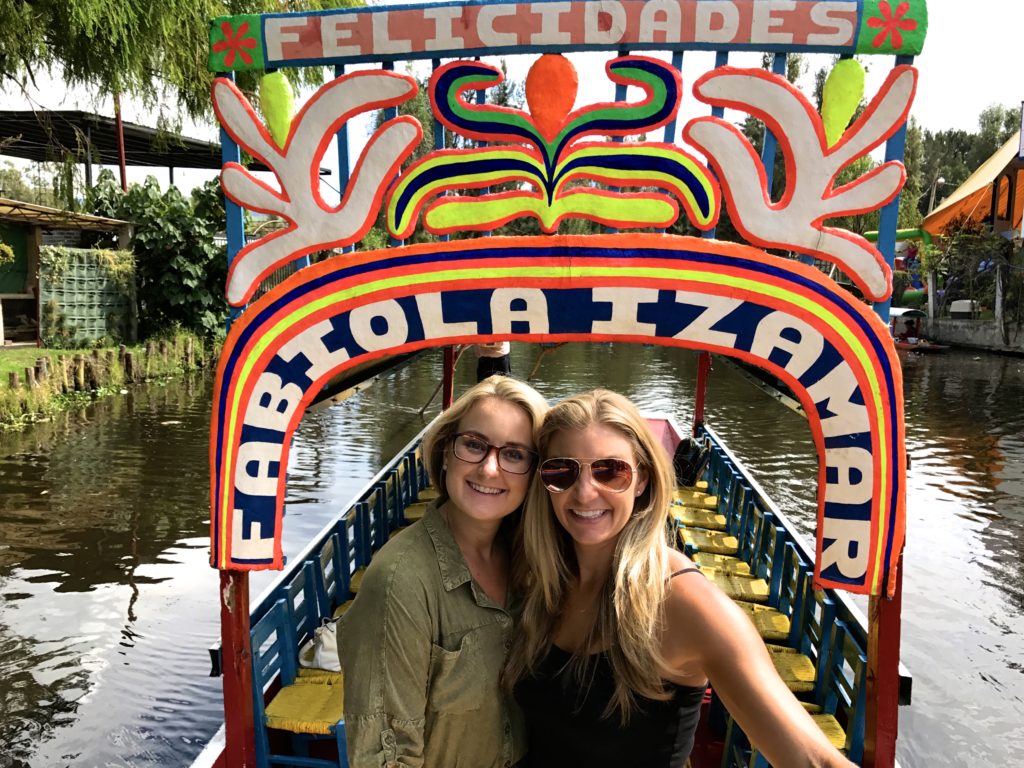
The Coyoacán neighborhood is another gem and famous for being home to Mexican painter, Frida Kahlo. The house she grew up in, known as Casa Azul because of it’s cobalt blue color, is now a museum honoring her life and work. She’s one of the most recognizable names in modern art and well known for her marriage to artist Diego Rivera, who also lived at this residence with her. After exploring the museum, Brittany and I strolled through the neighborhood’s cobblestone streets and people watched as locals filled the twin squares, Jardin Centenario and Jardin Hidalgo, enjoying their Sunday afternoon. Savoring the peacefulness of Coyoacán, we found a restaurant with an upstairs terrace overlooking a quiet square and sat down to an authentic Mexican meal.
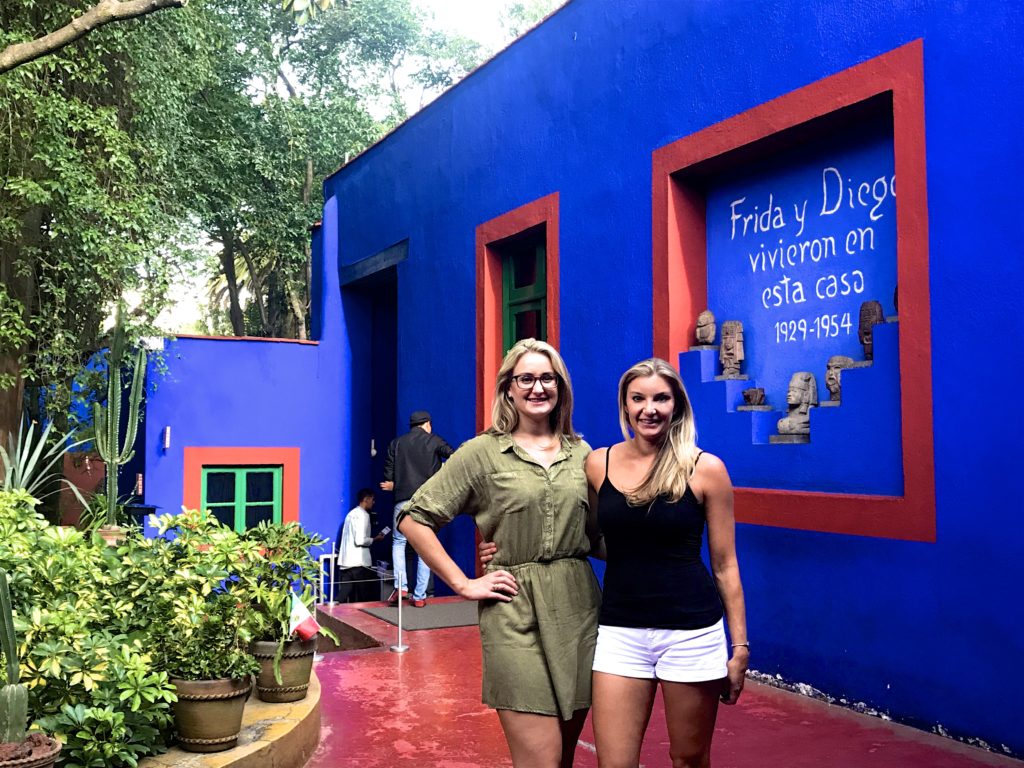
The residential neighborhoods of Roma and Condesa are also fun to explore during the day when you can admire the stunning old mansions, eclectic architecture, tree-filled parks and take a quick break at one of the charming sidewalk cafes. But both neighborhoods are also a good choice to spend an evening, as they are home to some of Mexico City’s trendiest restaurants and nightlife options. We spent a fun night testing our salsa skills at Mama Rumba, a cuban bar with a live band and a energetic dance floor.
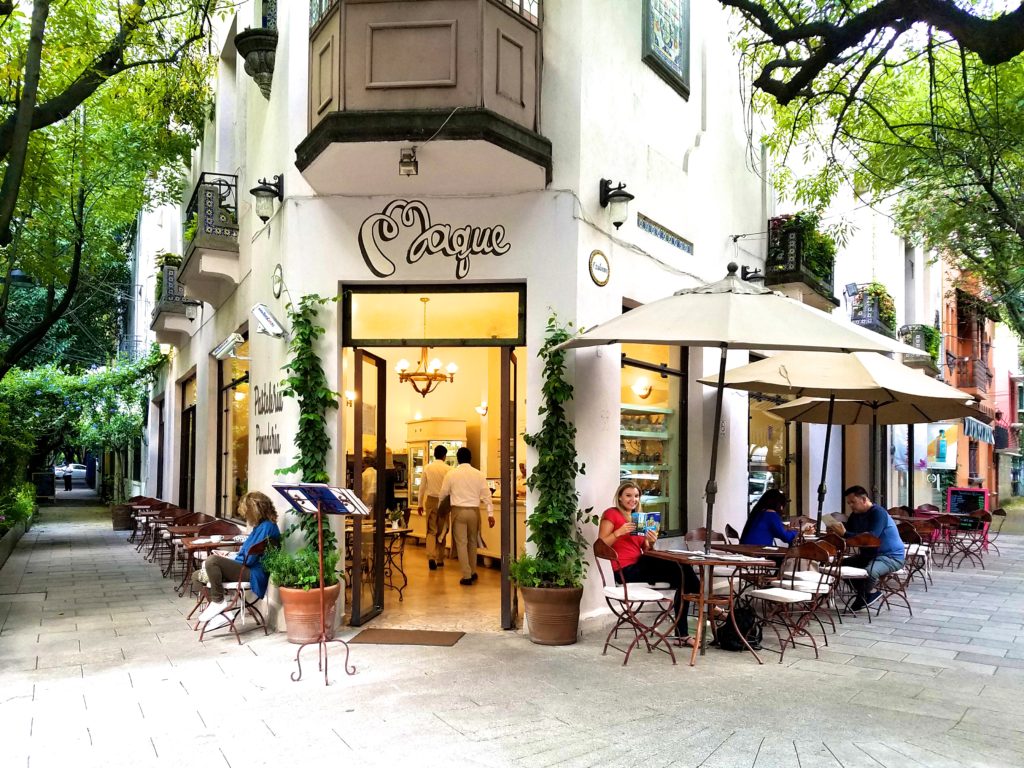
The glamorous neighborhood of Polanco is quickly becoming a hot spot for nightlife, in addition to already being known for it’s high end designer shops, posh upscale hotels and fancy restaurants. Take a stroll down Avenida Presidente Masaryk and you’ll feel like you’re on Beverly Hill’s Rodeo Drive… this is where the rich and famous come to play. We enjoyed the Terraza at the Hotel Hábita, a swanky rooftop lounge giving you an opportunity to sip cocktails amongst the beautiful people of Polanco while overlooking the city. Whatever you do, don’t leave Mexico City without sampling some of the area’s locally made tequila and mezcal, whether you’re drinking it straight up or in a margarita. Another popular must try is pulque, a fermented drink made from the sap of the maguey cactus. There is no shortage of cantinas and bars that specialize in offering many different varieties of mezcal or pulque… so come thirsty!
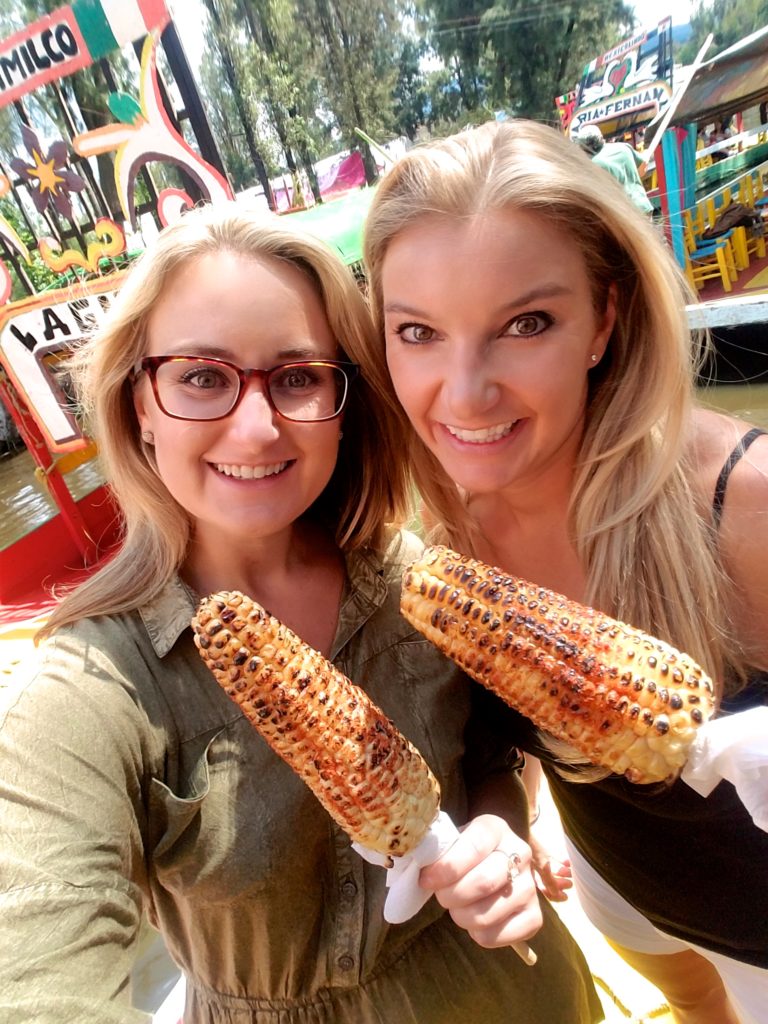
And don’t forget about the food scene!! There is no better place to experience Mexico’s diverse palate… from casual street stands to fine-dining restaurants, CDMX is a food mecca. Chilangos are serious eaters and their high expectations guarantee quality options even when snacking on the street, so you will find great food without having to dig deep into your wallet… there are excellent options at every price point. Tacos are a mainstay of the local diet, so don’t leave without trying several different varieties of this Mexican staple, but you really can’t go wrong with anything you choose off a menu. Mexico City is a fantastic place to eat, so don’t count calories… indulge! And don’t forget to have a churro!

Like any big city, the traffic in CDMX can be a nightmare and when connecting various sites throughout the city, you will end up wasting a lot of time and money sitting in a taxi. Uber is a much cheaper option, but still won’t help in regards to avoiding the congestion. Brittany and I opted for the subway, which proved to be a very inexpensive and efficient way to connect the essential neighborhoods we wanted to visit on our itinerary. Mexico City’s Metro is very easy to navigate with color coded lines and clearly labeled stops and it’s one of the most inexpensive major urban subway systems in the world with each ride costing the equivalent of $0.40 USD. Multiple people, including our hotel concierge, were shocked when we told them we had been riding the subway, making comments that we are very brave and must really love adventure. We wondered if we were missing something because not once did we feel unsafe, especially with the option to ride in the front cars that were reserved specifically for women and children. Plus I’m pretty confident we wouldn’t have had time to see everything on our itinerary if we have relied solely on taxis and ubers.
We were also fortunate enough to experience Mexico’s Día de la Independencia, which is celebrated on September 16th to commemorate the country’s independence from Spain. However, in Mexico City, the party gets under way on the evening of the 15th, the day Brittany and I arrived. Everywhere you turned, the colors of the Mexican flag were proudly displayed. People filled the streets, gathering in parks and plazas to listen to live music and partake in the festivities. Thousands fill the Zócalo to watch Mexico’s president on the balcony of the Palacio Nacional reenact Miguel Hidalgo’s cry for independence, which includes the infamous “Viva Mexico!” as the packed crowd below echoes his cry. Brittany and I had every intention of experiencing this celebration, but were warned that it probably wasn’t the safest idea for two American females. So we participated in the more tame festivities taking place on Paseo de la Reforma right outside of our hotel. With fireworks, locals gathering in the streets, live music and red, green and white proudly on display everywhere you looked, it was very reminiscent of how we celebrate our Independence Day in the States.
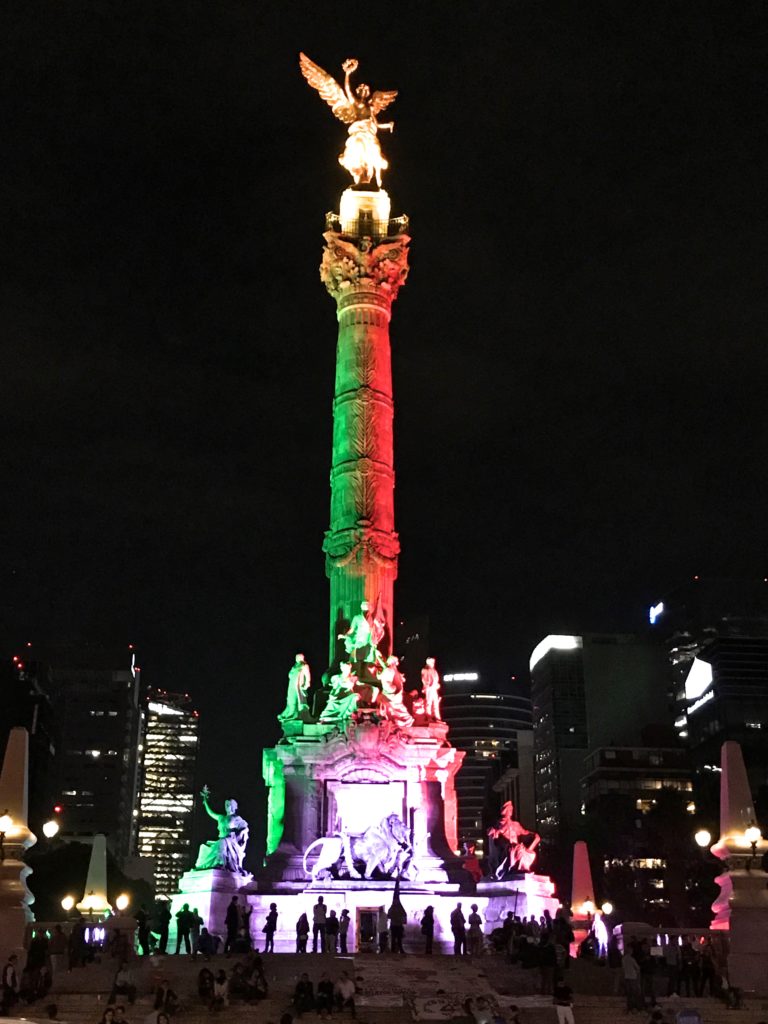
If you haven’t been and you appreciate good culture and great food, put Mexico City on your list. It feels like a European destination, but at a fraction of the cost and a much quicker trip. And don’t let anything you’ve heard hold you back… be smart, travel savy and aware and I’m confident you’ll have an enjoyable trip with no issues. Even for two girls who obviously stood out as tourists, Brittany and I didn’t feel unsafe once… instead, we felt very welcomed by everyone we crossed paths with. As we headed to the airport, we were reluctant to leave and could have definitely spent a few more days enjoying everything the city has to offer. But we’re confident we’ll be back… especially considering it’s such an easy trip from the US.
Our flight took off from CDMX at 10:48am on Tuesday, September 19th and when we landed in Los Cabos two hours later, we were shocked to hear that a 7.1 magnitude earthquake had struck Mexico City at 12:14pm, just an hour and a half after we had left. As the details unfolded, we were shaken by the photos and videos illustrating the horror and destruction. We also started to realize how lucky we were to have narrowly escaped just in time and immediately started thinking of all the chilangos we had connected with while spending time in their beautiful city and we pray they are okay. Much of Mexico City is built on the spongy, dry lakebed of what once was Lake Texcoco, so the unstable foundation maximizes an earthquake’s effects causing more damage. Ironically this earthquake fell on the 32nd anniversary of Mexico City’s most deadly and destructive 8.1 magnitude quake that struck on September 19, 1985. We continue to keep the people of CDMX in our thoughts and prayers and are confident if any city can rebuild from a tragedy like this, it’s the upbeat, warm-hearted community of Mexico City.